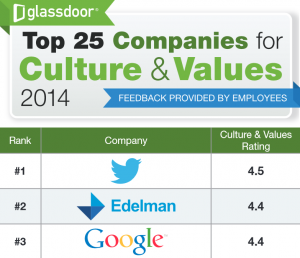>The U.S. Securities and Exchange Commission (SEC) recently put forth some guidance for publicly traded companies with respect to summary financial information posted on the company’s website. While earlier topics covered from this release (here and here) required some rooting around in the details and language for full understanding, the concepts put forth by the SEC here are simpler. Indeed, the comments regarding the posting of summary information span just three and half pages of the 47 page document.
Using Summary Information
The SEC in some cases actually requires the inclusion of a summary in certain filings or prospectuses in order to highlight important information that could otherwise be lost within the lengthy pages of details, boilerplate, and disclaimers that make up such documents. The SEC further notes that summaries are particularly appropriate when information provided is either long or complex.
So, it comes as no surprise that the SEC does not oppose, and in fact encourages, the use of such summaries on a company web site as well. The key issue, however, is that such a summary must not give any indication of being complete information. In other words, a summary published in such a way that a reasonable investor might believe he is reading the complete report or filing, is unacceptable. While most IR sites and their staff’s have no intention of misleading investors into thinking that they are reading anything other than a summary, just how to go about properly posting such information comes down to a few easy sign posts that can be marked by the IR staff.
First, while documenting that the information on the web site is a summary either in the title of the document itself, or via accompanying text on the IR site, is a natural first step, the SEC suggests taking the next step and providing a guide to where the full information is located. For the IR professional looking for best practices, such information should be linked both within the document’s web presence itself, and at the point of entry. For example, if a summary of a complex financial transaction is made available from a web page via a link, a corresponding link to the full information should be included as well. Such a link should be coded and positioned in such a way as to be obviously related to the link to the summary information. Further, at the end of the summary itself, should be something along the lines of:
“This summary provides an overview. The complete report can be found here.”
In this way, the IR site both makes clear to the investor that the information is a summary AND provides unfettered access to the full documentation.
Layered or Tiered Information
The SEC is a proponent of presenting information, not just on company web sites, in a format in which the most important summary or overview is presented first. Within that summary or overview, directions to more detailed information would be included at the appropriate points. Thus, an overview that included summary explanations of three concepts would also include the means with which to find further details on those three topics. In published materials, such pointers would take the form of something like, “For more information, see page 173.” On an IR web site, obviously, these pointers would take the form of “For more information, click here.” Indeed, the argument could be made that simply telling someone where the additional details could be found might be insufficient without a direct link. This raises the issue for IR professionals to carefully review material that is being published to ensure that when appropriate, actual links are added or substituted for the existing “go here” directive from print materials.
Depending upon how a company publishes such materials, the difficulty may rest in having the link not only send the user to the right web page, but also the right location on that web page. For example, an overview which mentions stock option compensation and has a link to more details would be much less effective if by clicking the link, the investor simply arrived at the top of a lengthy web page about all aspects of executive compensation.
IR Action Items
The information and guidance from the SEC in regards to providing summary information on a company web site is hardly earth shaking. None the less, it does provide some sign posts for the savvy IR professional.
First, don’t leave summary information out there on its own. Just because it was a previously approved publication doesn’t mean that it belongs front and center on your IR page without any context.
Second, always provide clearly marked and easily accessible links to the detailed information from which any summary or overview is drawn.
Third, always review any such summary or overview for references to additional materials that may have been appropriate for the printed version, but may not be ideal for an on line version. Most importantly, if an item is referenced, make sure it is made available in some form via the same web site that the summary and overview are available from.
Lucy is Editor at Corporate Eye


